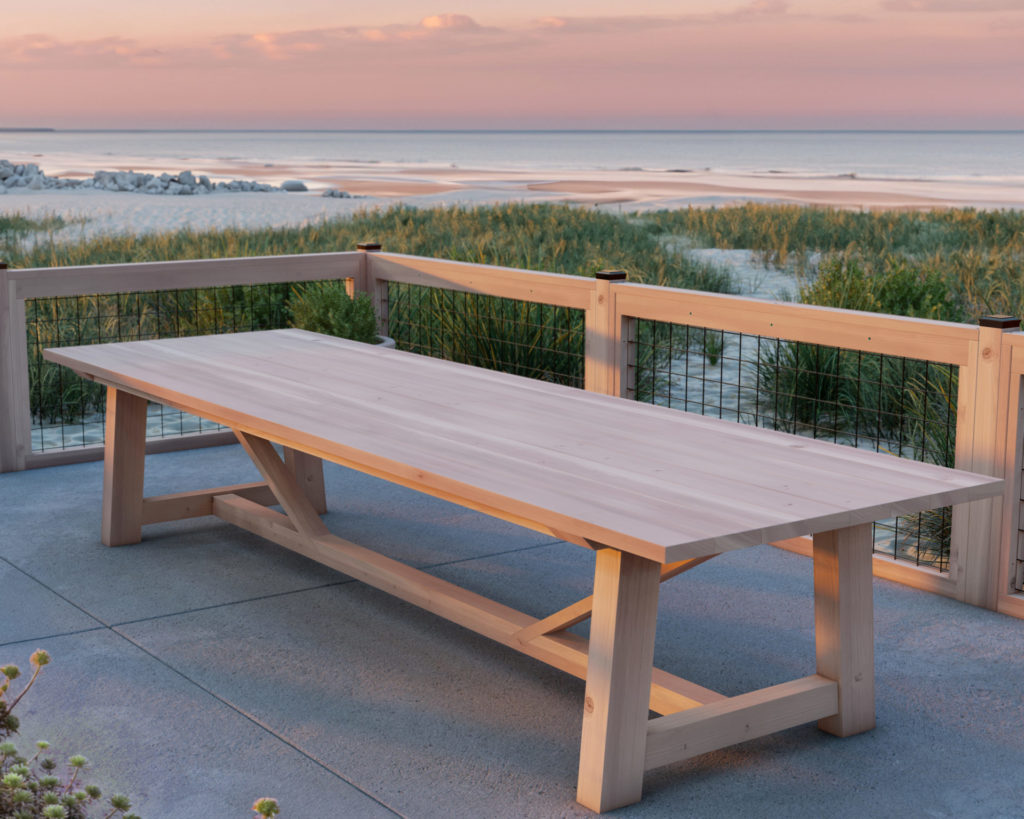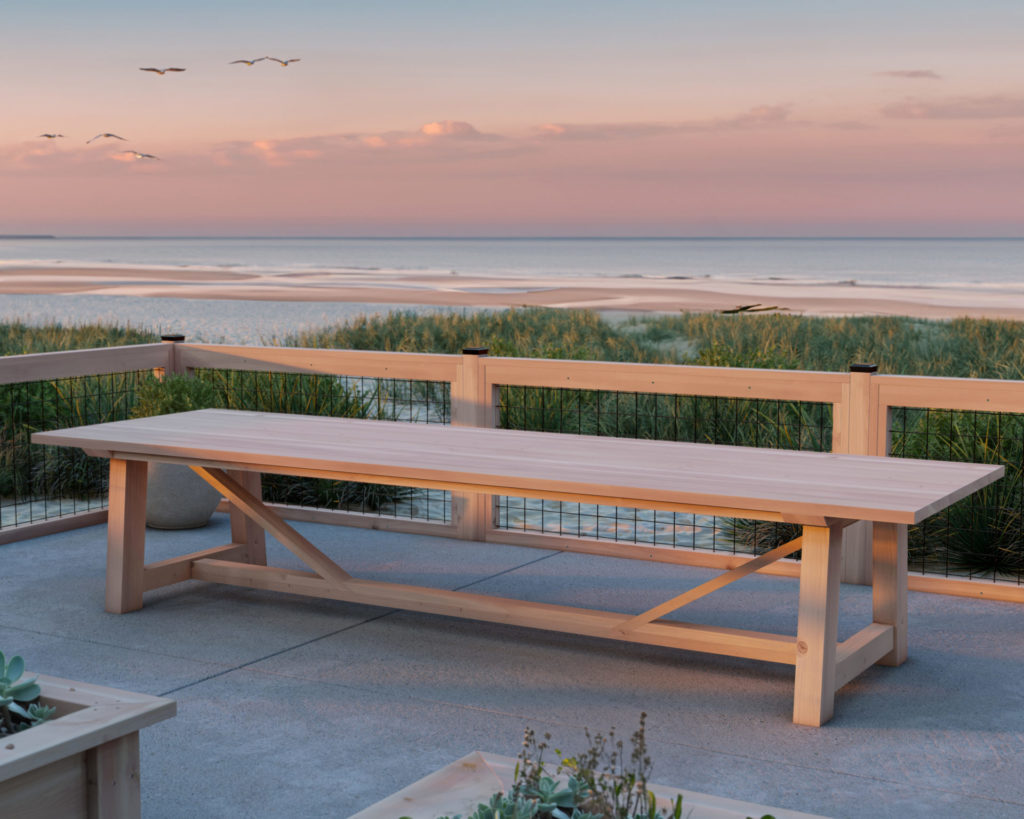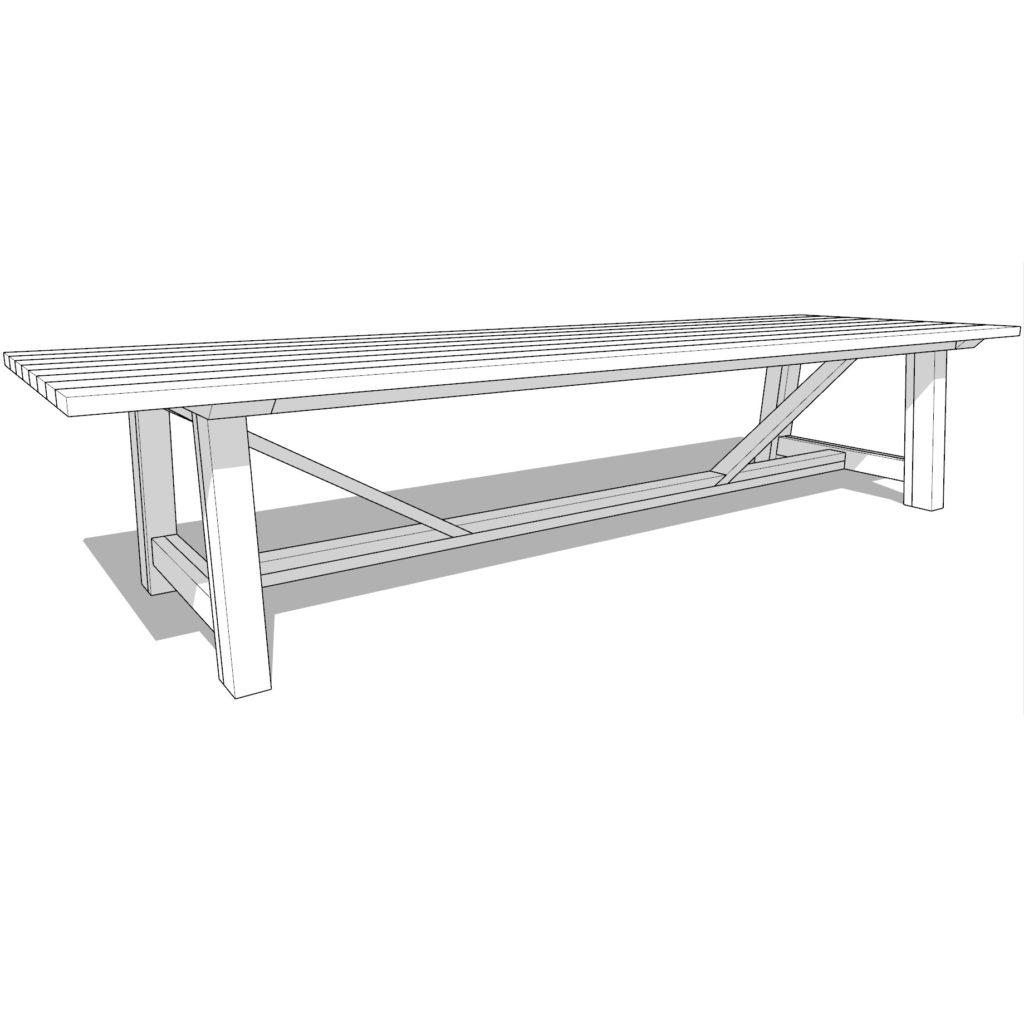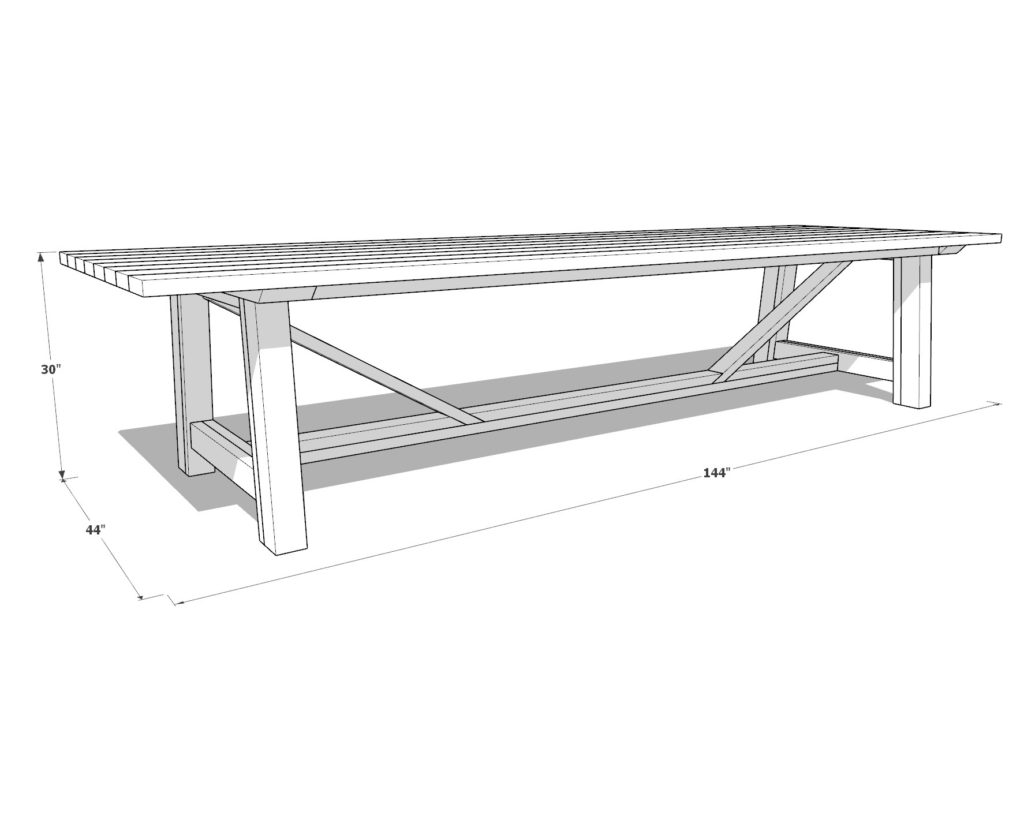Introduction
Imagine a space where the warm tones of a handcrafted table take center stage, a place where friends and family gather and stories unfold. This is not just a table; it’s a canvas for life’s moments, designed by you. It’s where the simplicity of wood meets the sophistication of design.
Specifications
With dimensions that invite conversation and celebration, our table stretches 144 inches in length, stands 30 inches tall, and spans 44 inches in width. Its presence is a balance of grandeur and grace, offering a stage for everything from quiet morning coffees to lively evening dinners. Crafted for those who appreciate the finer details, it speaks the language of home.
This is a Beginner-Friendly Project
Starting a DIY project can sometimes feel daunting, but it doesn’t have to be. Our farmhouse table plan is tailored for anyone eager to create with their hands, no prior experience necessary. The process is straightforward — simple cuts, simple assembly, and detailed guidance to ensure your success. We celebrate the beginner’s spirit and provide all the necessary information to make the journey from lumber to a full-fledged table as smooth as possible.
Customization Options
Your space is a reflection of your style, and this table adapts to it effortlessly. Whether it’s the rustic charm of Cedar or the robust lines of Douglas Fir, select the wood that resonates with your vision. With the ability to tailor dimensions to your living space, this table becomes uniquely yours.
What Makes Our DIY Plan Stand Out
Our guide is crafted for clarity and ease, using imperial dimensions to match the tools you already have. Each step is laid out with precision, paired with visuals that guide you without overwhelming. We go beyond the build, offering insights into finishing techniques that add character to your creation, ensuring that what you create today will be cherished for years to come.
Conclusion
Embark on a journey of creation with our DIY farmhouse table plan, where every step you take is a move towards bringing a vision to life. This is more than just a table; it’s a celebration of what you can build with your own hands. Welcome to the art of DIY, where you are the creator of more than just furniture—you’re crafting the centerpiece of your home.
Join us, and let’s build not just a table, but a lifetime of memories. Get your plan today.
Time
10 hours (varies with experience)
Cost
$200 (Costs may vary based on location and supplier.)
Skill level required
Beginner
DIY Farmhouse Table PDF Plan
What is included in the PDF download?
- Easy to read step by step instructions
- Material list
- Tools needed
- Helpful links to materials and tools needed
Tools Needed for This Project:
Available with the purchase of the DIY plan PDF.
Lumber Shopping & Cut List
Available with the purchase of the DIY plan PDF.
Step 1 (Cutting and Assembling the A-Frame Legs)
Sub-step 1: Cut the Pastel Yellow Pieces
- Measure and mark four 27-inch lengths on 2×4 lumber.
- Cut both ends of each piece at a 5-degree angle. Refer to the diagrams below for angle direction.
- These are the pastel yellow pieces in the diagrams below.
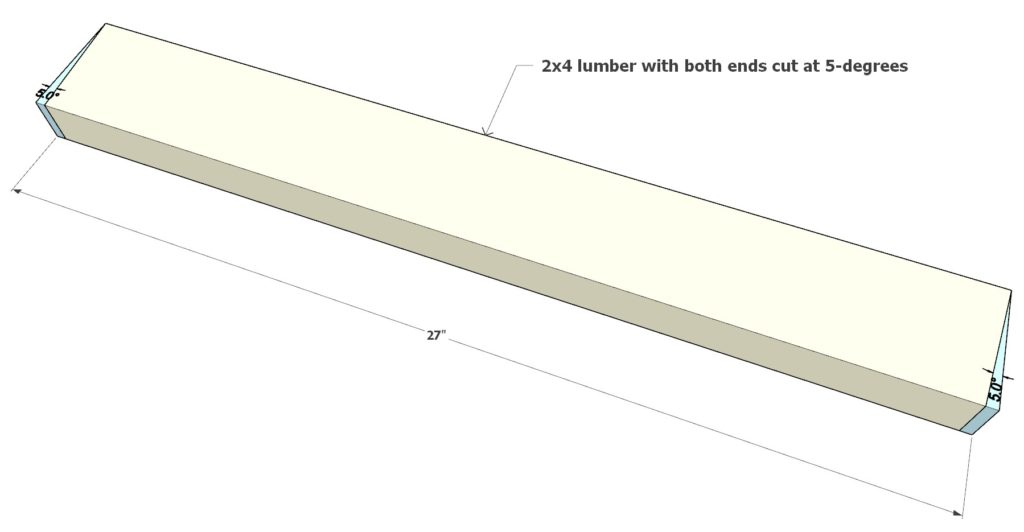
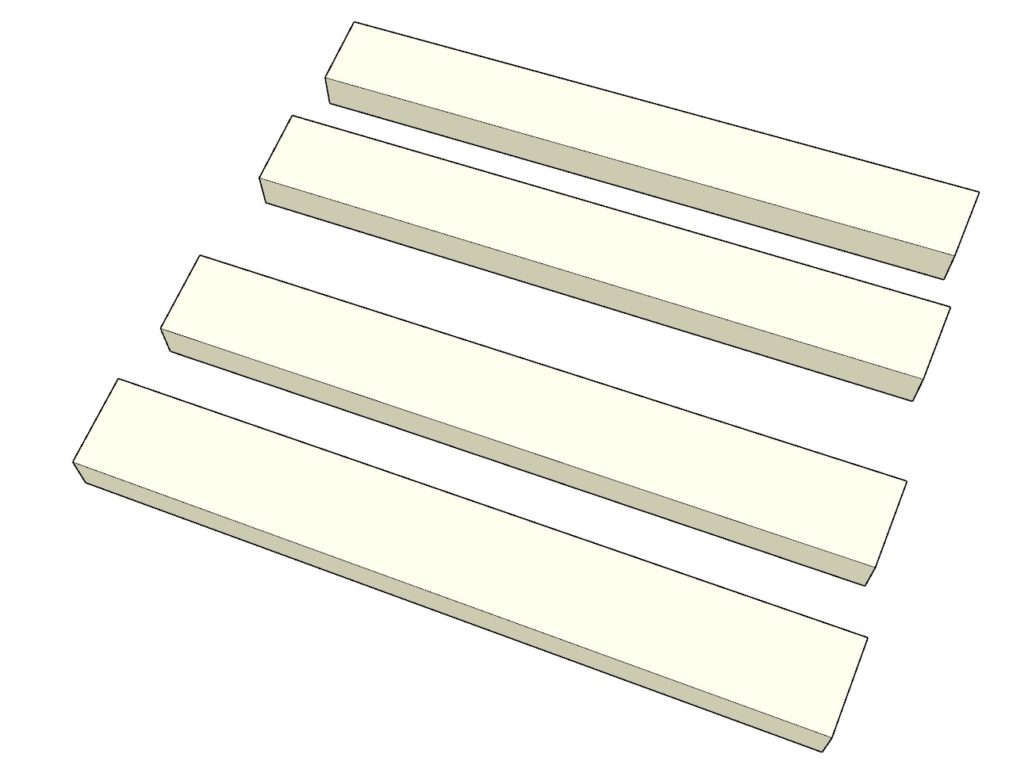
Sub-step 2: Cut the Light Green Pieces
- Measure and mark four 27-1/4-inch lengths on 2×4 lumber.
- Cut both ends of each piece at a 5-degree angle. Refer to the diagrams below for angle direction.
- These are the light green pieces in the diagrams below.


Sub-step 3: Cut the Lavender Pieces
- Measure and mark two 23-1/4-inch lengths on 2×4 lumber.
- Cut both ends of each piece at a 5-degree angle. Refer to the diagrams below for angle direction.
- These are the lavender pieces in the diagrams below.


Sub-step 4: Cut the Pink Pieces
- Measure and mark two 44-inch lengths on 2×6 lumber.
- Cut both ends of each piece at a 45-degree angle. Refer to the diagrams below for angle direction.
- These are the pink pieces in the diagrams below.


Sub-step 5: Cut the Dark Green Pieces
- Measure and mark four 27-7/16-inch lengths on 4×4 lumber.
- Cut both ends of each piece at a 5-degree angle. Refer to the diagrams below for angle direction.
- These are the dark green pieces in the diagrams below.


Sub-step 6: Assemble One A-Frame Leg
- Take two light green (27-1/4-inch) pieces, one lavender (23-1/4-inch) piece, and one pastel yellow (27-inch) piece.
- Join them using wood glue and 3.5-inch screws.
- Secure all joints with wood glue and 3.5-inch screws, ensuring the assembly is square and stable.
- Attach two dark green (27-7/16-inch) pieces to the light green pieces using wood glue and 3.5-inch screws.
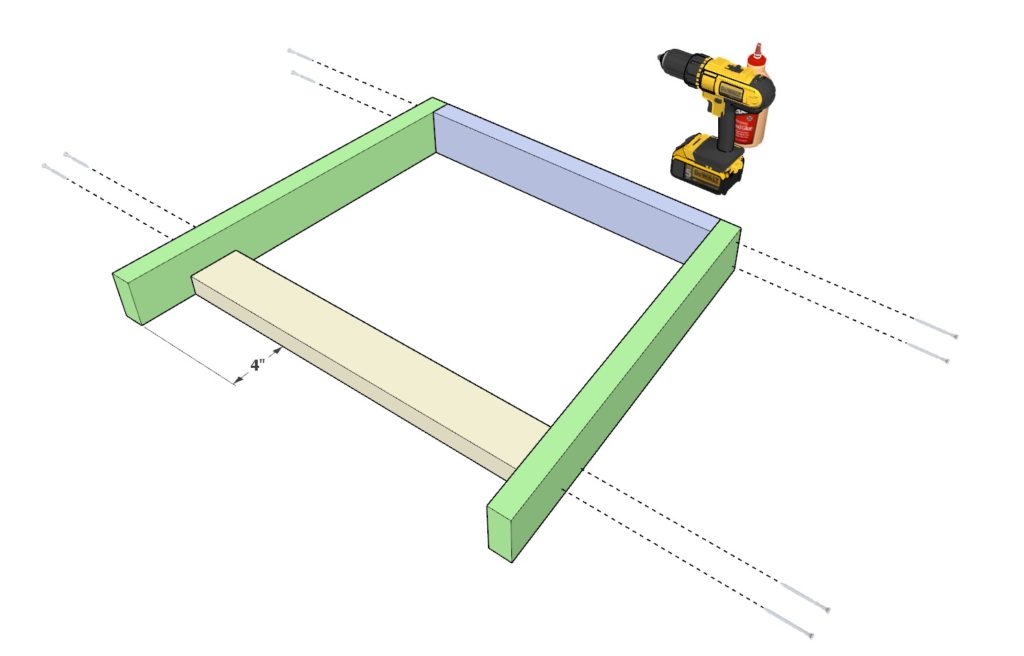
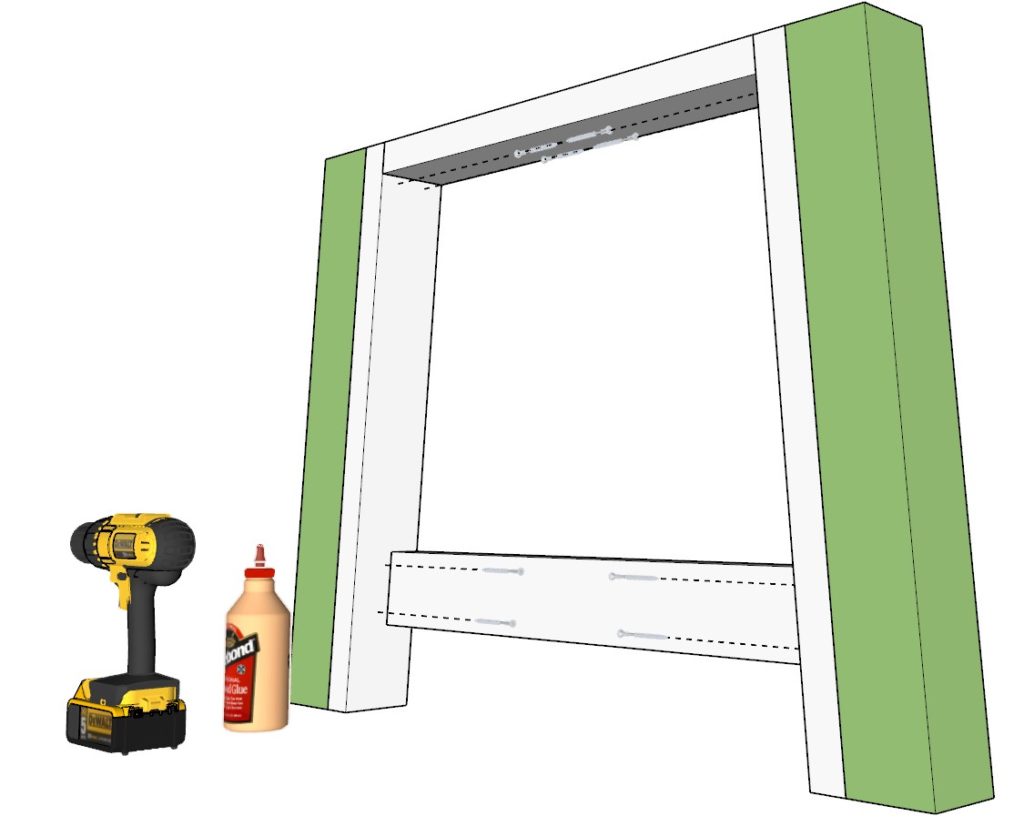
Sub-step 7: Complete the Second A-Frame and Add Finishing Tips
- Repeat Sub-step 6 to create a second identical A-frame assembly.
- For a professional finish: Use a countersink drill bit on all screw holes to hide screw heads.
- Fill holes with wood plugs (predrill to match dowel size) or wood putty; note putty may stain differently.
- Consider staining or painting pieces before assembly for even coverage.
- Wipe excess glue immediately to avoid issues with stain absorption.

Step 2 (Preparing Supports and Assembling Base Frame)
Sub-step 1: Cut the Bright Yellow Pieces
- Measure and mark two 42-5/8-inch lengths on 2×4 lumber.
- Cut both ends of each piece at a 60-degree angle. Refer to the diagrams below for angle direction.
- These are the bright yellow pieces in the diagrams below.


Sub-step 2: Cut the Teal Pieces
- Measure and mark two 30-3/4-inch lengths on 2×4 lumber.
- Cut one end of each piece at a 60-degree angle. Refer to the diagrams below for angle direction.
- These are the teal pieces in the diagrams below.
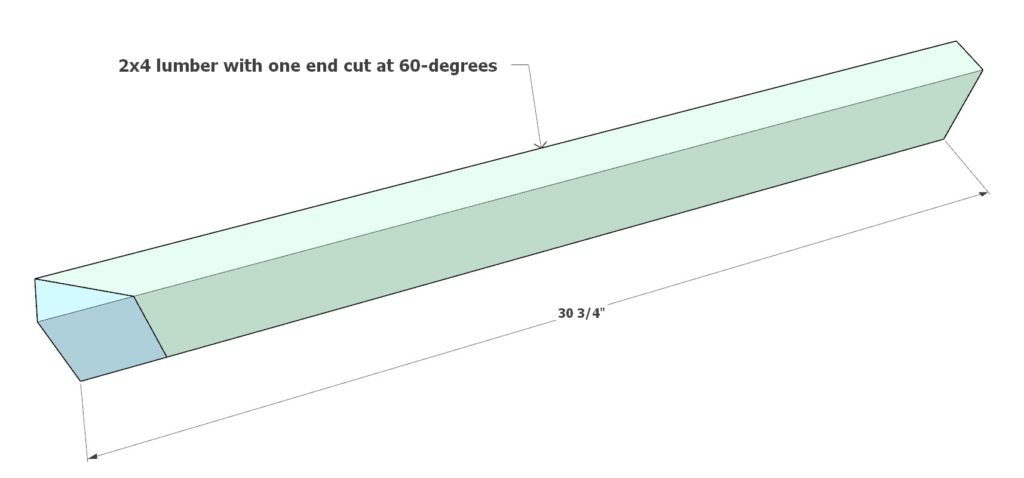
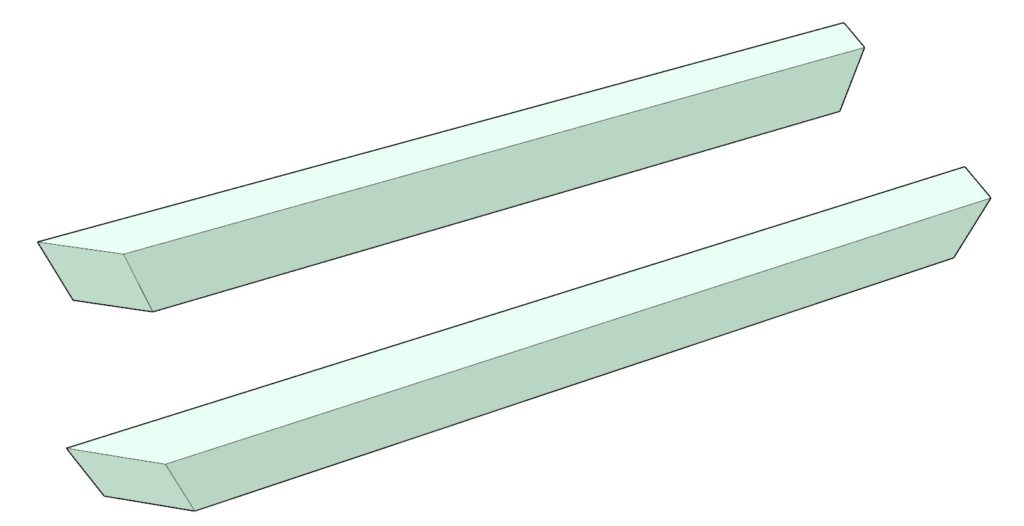
Sub-step 3: Cut the Dark Teal Piece
- Measure and mark one 50-11/16-inch length on 2×4 lumber.
- Cut both ends at a 60-degree angle. Refer to the diagrams below for angle direction.
- This is the dark teal piece in the diagrams below.

Sub-step 4: Cut the Dark Pink Piece
- Measure and mark one 113-inch length on 2×4 lumber.
- No angled cuts needed for this piece.
- This is the dark pink piece in the diagrams below.

Sub-step 5: Connect the A-Frames
- Position the bright yellow (42-5/8-inch) long cross beams, teal (30-3/4-inch) short cross beams, and dark teal (50-11/16-inch) central support beam to join the two A-frame assemblies from Step 1.
- Secure with wood glue and 3.5-inch screws for most connections, using 2.5-inch screws where longer ones might poke through. Refer to the diagrams below for placement and screw positions.
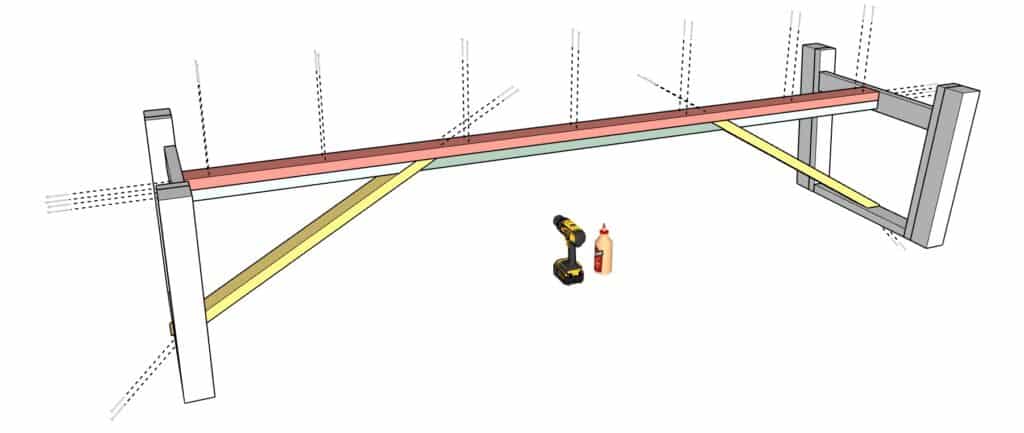
Sub-step 6: Trim the Bright Yellow Pieces
- Trim the end off on both sides of each bright yellow piece as shown in the diagrams below.

Sub-step 7: Attach Remaining Pieces and Add Tips
- Attach the pink (44-inch) 2×6 pieces and the remaining pastel yellow (27-inch) 2×4 pieces to the assembly with wood glue and a mix of 2.5-inch and 3.5-inch screws, depending on placement and depth.
- For a clean assembly: Follow the diagrams below closely for screw placement to help conceal screws, especially if not using dowels or wood putty.

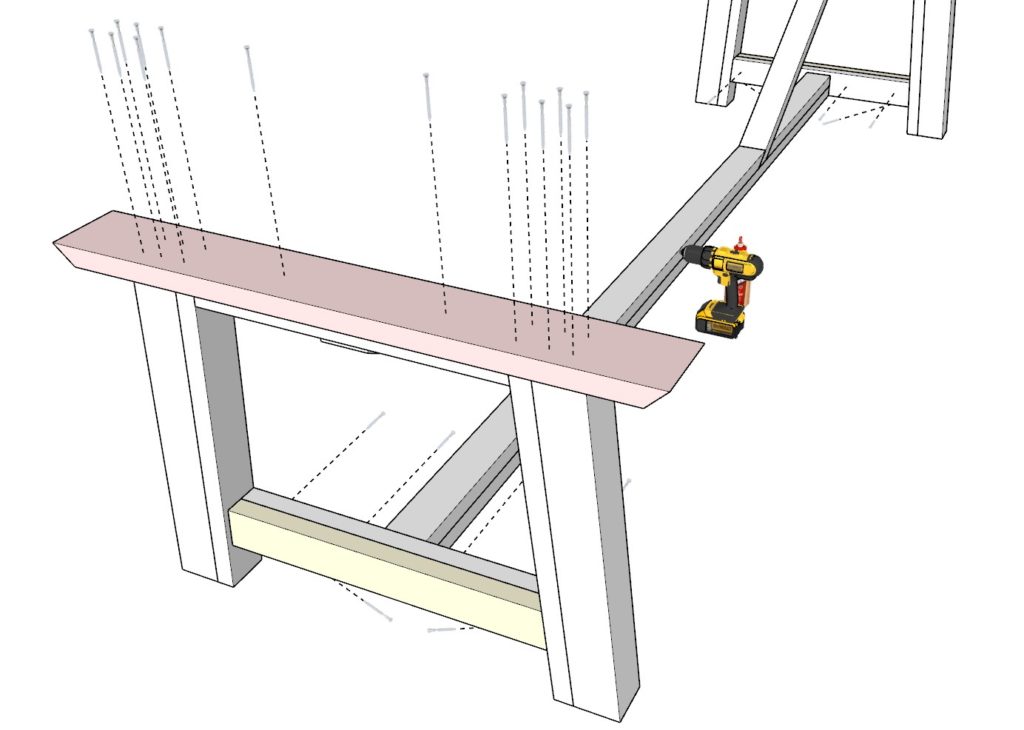
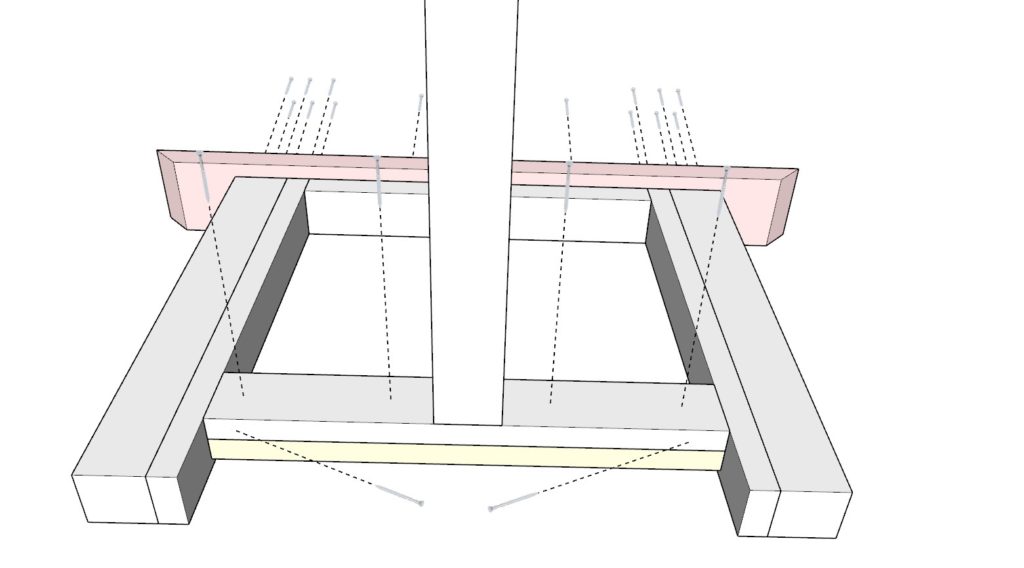
Step 3 (Assembling Tabletop and Attaching Base)
Sub-step 1: Prepare the Tabletop Planks
- Gather eight 2×6 lumber pieces, each 144 inches long.
- These form the tabletop surface.

Sub-step 2: Cut the Frame Pieces
- Measure and mark two 111-inch lengths on 2×8 lumber.
- Measure and mark three 26-1/2-inch lengths on 2×4 lumber.
- Cut all pieces straight; no angled cuts needed.
- Arrange the two 111-inch 2×8 pieces and three 26-1/2-inch 2×4 pieces beneath the tabletop planks as shown in the diagrams below.
- Secure the frame pieces together using wood glue and 2.5-inch screws.
- Use pipe clamps to hold the planks tightly together while securing them to the frame; leave clamps on until glue dries.
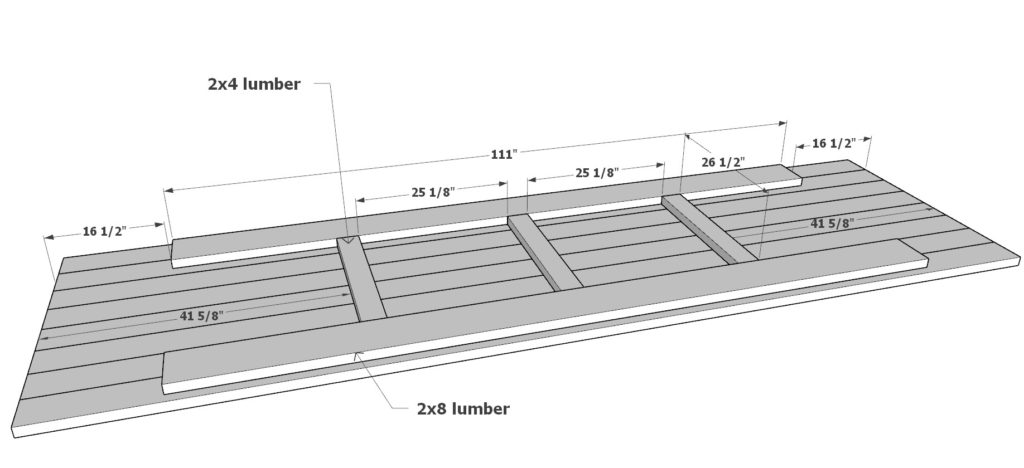

Sub-step 4: Attach Base to Tabletop and Add Tips
- Align the base from Step 2 with the tabletop assembly as shown in the diagrams below.
- Secure using wood glue and 2.5-inch screws.
- For stability: Use plenty of 2.5-inch screws, as they won’t be visible in the finished table.
- If wood has knots, warps easily, or table is for outdoors, prioritize screws over glue to allow natural wood movement and avoid gaps.
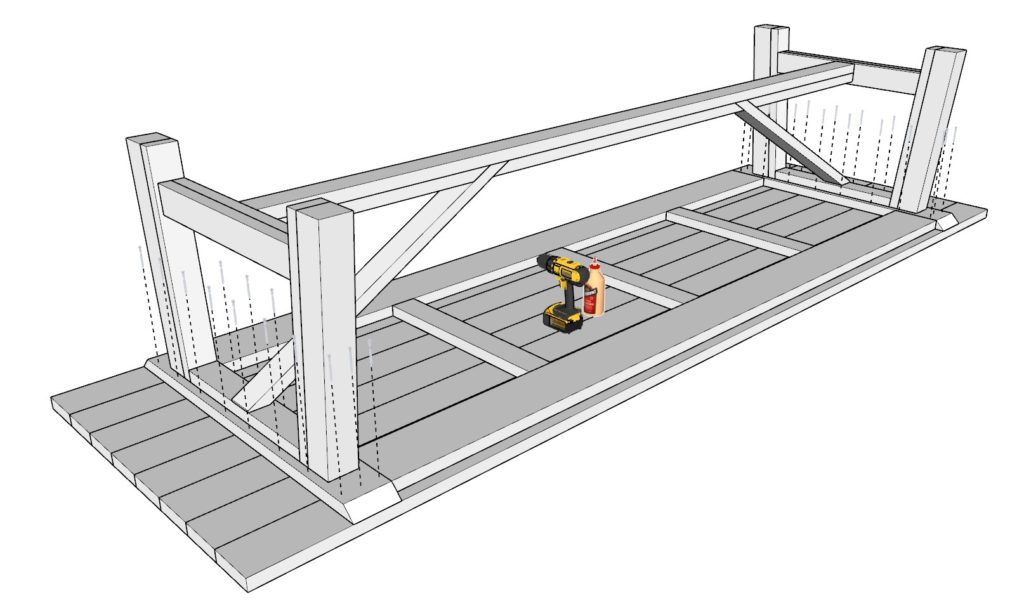
Step 4: Preparing and Finishing the Wood
Preparing for Staining and Painting:
- Sand the wood thoroughly, starting with a coarse-grit sandpaper and progressing to a fine-grit paper for a smooth finish.
- Remove all dust with a tack cloth or a damp rag to ensure a clean surface.
Using Wood Conditioners and Pre-Stains:
- Pros: They can help achieve a more even stain application, especially on woods like pine that tend to absorb stains unevenly.
- Cons: Additional step and cost; may not be necessary for all wood types or desired finishes.
Distressing Wood Techniques:
- Physical Techniques: Use tools like hammers, chains, and screws to create dents and scratches for an aged look.
- Finish Techniques: Apply layers of paint, then sand in places to reveal the wood or underlying paint colors.
- Pros and Cons: Physical distressing offers authenticity; however, it can weaken the wood if overdone. Finish techniques can be less damaging but may look less natural.
Staining Wood:
- Apply stain with a brush or rag, working along the wood grain.
- Wipe off excess stain with a clean rag for an even finish.
- Apply multiple coats until the desired color is achieved, allowing adequate drying time between coats.
Painting Wood:
- Apply a primer coat and let it dry completely to ensure paint adhesion.
- Use a high-quality paintbrush or roller to apply paint in thin, even coats.
- Sand lightly between coats for a smooth, professional finish.
Maintaining Your Table:
- For indoor use, dust regularly and clean spills quickly with a dry cloth.
- Reapply a protective finish, such as polyurethane, every few years or as needed.
- For outdoor use, consider a UV-protective sealant, and cover or store the table during harsh weather.


